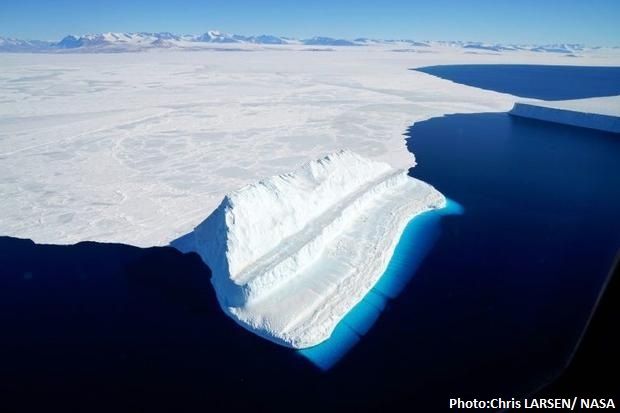A chasm and a crack on the Brunt Ice Shelf in Antarctica are creeping closer and closer to one another, and when the two finally meet, a slab of ice twice the size of New York City will break away and float out to sea.
The two glacial flaws are about 4 kilometres apart, and it could take days or months for them to finally rendezvous.
But when they do, the iceberg that forms in the Weddell Sea won't be the largest to orbit Antarctica. In fact, it might not even make the historical top 20.
Its size is not what makes it noteworthy - it's what the break itself says about the natural process of iceberg calving, the way climate change might be destabilising other ice shelves like Brunt, and how the movement could jeopardise the critical scientific research human residents have conducted there for more than 60 years.
Since 1956, British scientists have been studying geology, glaciology and the atmosphere at the Halley research station located on the Brunt Ice Shelf.
The lab has been torn down and rebuilt many times over the decades, and took its most recent form in 2012 when the Halley VI Research Station - a mobile, modular structure - delivered its first scientific data.
That same year, satellite monitoring showed that a large chasm in the ice shelf - officially named Chasm 1 - was growing for the first time in more than three decades.
If it kept growing, Chasm 1 would have eventually marooned the Halley VI station, so the British Antarctic Survey decided to move its researchers further inland and a safe distance from the chasm during several months in 2016 and 2017.
On the Brunt, there is no immediate threat to Halley VI or the people who inhabit it.
Its current location is outside the predicted iceberg mass, but a spokesperson at the British Antarctic Survey said researchers are monitoring changes to the structural integrity of the ice shelf.
Part of that monitoring has included the precautionary measure of closing down operations at the research station for the past three Antarctic winters, which feature months of darkness and heavy snowfall.
Under those conditions, it would be more dangerous to launch a rescue mission if the cracks and chasms were to compromise the safety of researchers at Halley VI.
Currently, staff members are preparing to leave for winter 2019.
"Contingency plans are in place should ice conditions change significantly before departure of staff from the station," the British Antarctic Survey told The Washington Post in a statement.
"The station is designed to be relocatable. The frequency of relocation depends very much on how the ice behaves in the future."










